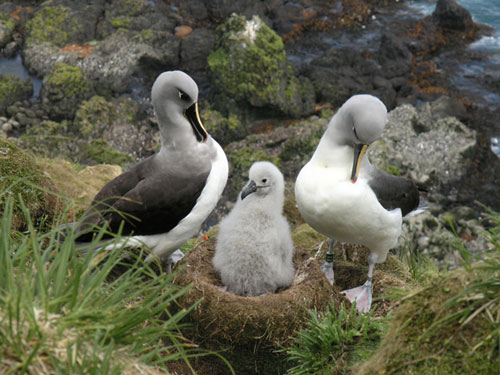Michelle Paleczny (University of British Columbia, Vancouver, Canada) and colleagues have published in the open-access journal PLoS ONE on a global review of monitored seabird populations. The paper notes the poor conservation status of both the families Diomedeidae (albatrosses) and Procellariidae (petrels and allies). It states that “…the removal of cats and rats from small islands has been achieved on multiple occasions and been shown to increase local seabird numbers, however undertaking conservation actions for pan-global populations [as for many of the 31 ACAP-listed species], such as reducing oceanic pollution or lowering fishing pressure will be considerably more challenging.”
The paper’s abstract follows:
“Seabird population changes are good indicators of long-term and large-scale change in marine ecosystems, and important because of their many impacts on marine ecosystems. We assessed the population trend of the world’s monitored seabirds (1950–2010) by compiling a global database of seabird population size records and applying multivariate autoregressive state-space (MARSS) modeling to estimate the overall population trend of the portion of the population with sufficient data (i.e., at least five records). This monitored population represented approximately 19% of the global seabird population. We found the monitored portion of the global seabird population to have declined overall by 69.7% between 1950 and 2010. This declining trend may reflect the global seabird population trend, given the large and apparently representative sample. Furthermore, the largest declines were observed in families containing wide-ranging pelagic species, suggesting that pan-global populations may be more at risk than shorter-ranging coastal populations.”

Grey-headed Albatross family, photograph by Rowan Treblico
Reference:
Paleczny, M., Hammill, E., Karpouzi, V. & Pauly, D. 2015. Population trend of the World’s monitored seabirds, 1950-2010. PLoS ONE 10(6): e0129342. doi:10.1371/journal.pone.0129342
John Cooper, ACAP Information Officer, 13 June 2015

 English
English  Français
Français  Español
Español